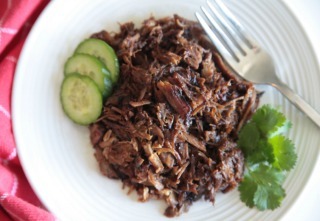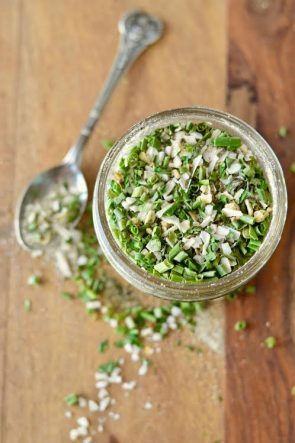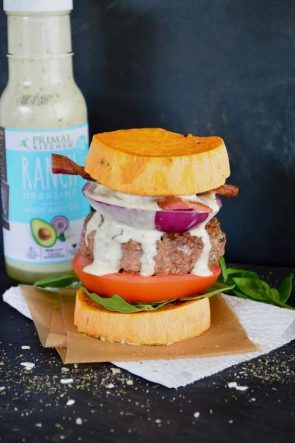Mark Sisson's Blog, page 188
March 26, 2017
Weekend Link Love – Edition 445
 RESEARCH OF THE WEEK
RESEARCH OF THE WEEKAgriculture changed fatty acid conversion genes.
Elderly women who start taking statins have an increased risk of developing diabetes (just what they need!).
Climbing stairs for 3 minutes after each meal improves glucose control in type 2 diabetics.
Good sleep is like winning the lottery.
NEW PRIMAL BLUEPRINT PODCASTS

Episode 161: Helen Marshall: Host Elle Russ chats with Helen Marshall, who used Primal living to overcome debilitating digestive issues and now runs a global health coach service, produces a line of Primal Alternatives to the foods we used to love (and franchises it out to other people), all from 100 kangaroo-strewn acres in the Australian bush.
INTERESTING BLOG POSTS
How hot baths and other forms of “passive heating” can have surprisingly beneficial effects.
Is 15,000 steps a better target than 10,000?
Why there’s nothing like a good storm.
MEDIA, SCHMEDIA
Watch the precise moment a plankton eats plastic.
Woman dies after receiving IV turmeric for eczema. Just eat it, folks.
Australian researchers have reversed cell aging and extended a mouse’s lifespan (and healthspan) by 20% using an enzymatic precursor.
EVERYTHING ELSE
The NBA runs on PB&Js.
Cornell’s famous food lab is under fire for fabricated research.
The evolution of brain depictions.
In natural selection, “the fittest” doesn’t necessarily mean “the most ruthless and physically dominant.”
Spiders eat as much animal food as all the humans on earth.
Smoothies might make you fuller for longer.
THINGS I’M UP TO AND INTERESTED IN
Ticket deal you should get on: Paleo f(x) 2017 is coming, and the organizers have a ticket flash sale for early adopters going through March 31.
Two views on a fundamentally “human” ability—empathy: Paul Bloom’s (“against”) and a new paper from Penn State.
Story I loved: 91-year-old woman gets cancer diagnosis, skips chemo, decides to go on epic 12-month road trip.
Stat I didn’t like: Today’s men are weaker than their fathers were at the same age.
I couldn’t stop laughing: Fake strongmen on local morning news shows.
RECIPE CORNER
Adobo chicken is so good. Filipino food remains underrated.
Sweet potato gnocchi with Brussels sprouts is a surprisingly good alternative to regular pasta.
TIME CAPSULE
One year ago (Mar 26– Apr 1)
How to Develop Emotional Resilience in the Modern World – Stay hardy.
How Going Primal Can Help With 5 Common Genetic Mutations – Primal eating and living actually goes quite well with many recent genetic developments.
COMMENT OF THE WEEK
“I picked up 21 chicks that walked through my yard last April and put them in a cage (don’t think anyone missed them) but it wasn’t until they were freed and allowed to start finding their own food and spaces that they started laying. Now they sleep in the pomerac tree and eat anything they can find or that’s tossed out the kitchen window. We still feed them occasionally with the factory feed but that’s more to ensure that they can still be tempted back into the coop in the event that they stop laying and need to be curried instead.”
– Interesting thoughts from Stephen Sankarsingh.

The post Weekend Link Love – Edition 445 appeared first on Mark's Daily Apple.



March 25, 2017
Instant Pot BBQ Pulled Pork
 Thanks to everyone’s new best friend, the Instant Pot, this BBQ pulled pork is on the table in two hours, with very little work from you. The BBQ sauce just might be the BBQ sauce you’ve always been searching for. It’s tangy, spicy, slightly sweet, and takes about 5 minutes to make. It’s easy to imagine brushing this sauce over brisket and grilled chicken, not just pulled pork.
Thanks to everyone’s new best friend, the Instant Pot, this BBQ pulled pork is on the table in two hours, with very little work from you. The BBQ sauce just might be the BBQ sauce you’ve always been searching for. It’s tangy, spicy, slightly sweet, and takes about 5 minutes to make. It’s easy to imagine brushing this sauce over brisket and grilled chicken, not just pulled pork.
The recipe for the BBQ sauce starts with blackstrap molasses for its depth of flavor and thick, syrupy consistency. Only a tablespoon, so the flavor of molasses doesn’t overwhelm the sauce, but you still get a nice dose of magnesium, calcium, potassium, iron, copper, and manganese. This BBQ sauce is yet another delicious way to work blackstrap molasses into your diet.
The BBQ sauce is drizzled over the pork when it comes out of the Instant Pot. By now, you’ve probably heard about the Instant Pot, a pressure cooker that cooks in a fraction of the usual time. It’s an especially handy appliance for meat lovers, making it easy to turn a large cut of meat into a flavorful meal. This delicious recipe is a perfect example of what the Instant Pot can do, turning BBQ pulled pork into a simple hands-off meal.
Time in the Kitchen: 20 minutes, plus 90 minutes in the Instant Pot
Servings: 6
Ingredients

3 to 4 pounds boneless pork shoulder, cut into 3 pieces (1.4 kg to 1.8 kg)
1 teaspoon coriander (5 ml)
1 teaspoon cumin (5 ml)
1 teaspoon chili powder (5 ml)
½ teaspoon garlic powder (2.5 ml)
1/2 teaspoon cinnamon (2.5 ml)
2 teaspoons plus ¼ teaspoon kosher salt, divided (10 ml to 1.2 ml)
1 tablespoon unsulphured blackstrap molasses (15 ml)
1 garlic clove, pressed or finely chopped
1 tablespoon honey (15 ml)
1 tablespoon gochujang (Korean red chili paste) (15 ml)
1 teaspoon Dijon mustard (5 ml)
1 teaspoon apple cider vinegar (5 ml)
1 teaspoon coconut aminos (5 ml)
Instructions

In a small bowl mix together coriander, cumin, chili powder, garlic powder, cinnamon and 2 teaspoons/10 ml salt.
Rub spice mix on pork. (If possible, let the meat sit out 30 minutes, so the meat comes to room temperature)
Press the “sauté” button on the Instant Pot. Add a drizzle of oil. Add the pieces of pork, browning on 2 sides before adding ¾ cup (180 ml) water to deglaze the bottom of the pot.
Cover and lock the lid. Press the “Keep warm/cancel” button, then press the “manual” button and set the pot to cook for 90 minutes under high pressure. Make sure the valve is in the “sealed” position. When 90 minutes has passed, let the pressure come down naturally.
While the pork cooks, whisk together the blackstrap molasses, garlic, honey, gochujang, Dijon mustard, apple cider vinegar, coconut aminos and remaining ¼ teaspoon (1.2 ml) salt. Set aside.
Remove the pork from the liquid in the pot. When the pork is cool enough to handle, shred with a knife or fork.
Pour the BBQ sauce over the pork and mix it in well. If you want to warm the pork back up, either put it back in the Instant Pot for a few minutes (with all liquid removed), or spread the meat out under the broiler for a few minutes (careful, so it doesn’t burn).
Serve warm or at room temperature. Cool, crisp cucumbers and cilantro are tasty garnishes.
The post Instant Pot BBQ Pulled Pork appeared first on Mark's Daily Apple.



March 24, 2017
I Now Have Plans All the Way to Ninety
It’s Friday, everyone! And that means another Primal Blueprint Real Life Story from a Mark’s Daily Apple reader. If you have your own success story and would like to share it with me and the Mark’s Daily Apple community please contact me here. In fact, I have a contest going right now. So if you have a story to share, no matter how big or how small, you’ll be in the running to win a big prize. Read more here.
 I’ve been intending to write this for some time but was waiting for some milestone. I guess that 75 years is a good one. My birthday was last Saturday.
I’ve been intending to write this for some time but was waiting for some milestone. I guess that 75 years is a good one. My birthday was last Saturday.
Basic statistics. At present I am 5’8″ tall, weigh between 176 and 180 lbs. with a 32″waist. Before I discovered the paleo lifestyle I was 205 lb with a 39″ waist. I was also asthmatic, arthritic, grumpy, and on the verge of diabetes.
My doctor told me straight: lose weight or go onto medication. Great. I had been struggling with weight gain for forty years. In my twenties I had given up smoking, in my thirties I was gaining weight steadily, so I took up jogging seriously. It worked for a while, but inevitably injuries accumulate. At forty I looked scrawny, but with a bit of a tummy. I gave up jogging and became a gym rat. I enjoyed lifting. I never liked aerobic classes, but did a lot of walking, skiing, scuba diving and tramping apart from the gym, and that seemed to work. I realise now that I had become what they call muscular fat.
The problem of course was that I was trapped in the calorie restriction/exercise paradigm. This does work of course, but there remains the “law of diminishing returns.” You have to work harder just to stay as you are, and as you get older, you simply can’t.
I retired ten years ago from a lifetime as an art teacher and expected to spend the golden years painting it out. Generally I have done this but was finding it increasingly difficult to juggle exercise, recovery, and general living.

Then came my doctor’s ultimatum. I was in despair. I had followed the guidelines. I ate according to the pyramid. I chowed down the grains, and avoided all fats. I felt doomed.
The moment of revelation came when I saw a book on Amazon by Gary Taubes: Why We Get Fat, and What We Can Do about It. It was the first time that I had read a clear exposition of the insulin cycle. Two things followed: I crossed my fingers, took a deep breath, chucked out the “healthy living pyramid,” and read wildly and widely.
Overnight I became an Atkins fan. I went keto. I did the Whole30. And I discovered that ultimately all paths lead to Mark’s Daily Apple. Paleo makes sense. We should be able to achieve a healthy balanced life without fanaticism. I believe that over time I have.
The remarkable thing is how effortless it has all been. I expected to struggle. But there has been no struggle. I had some sort of existential angst at the beginning. Surely it must be harder that this? The weight just melted off. My natural weight for my height and body type is 180 lbs. If I wanted to I could work harder and get shredded. Why? I’m not in any competition.
Good things. My arthritis has largely gone. Five years ago I dreaded meeting people for the first time and having to shake hands. The pain was excruciating. Now I don’t think twice about it. I used to have dizzy spells. They have gone. My doctor is impressed with my blood tests. He keeps expecting me to revert, but I keep surprising him. I have one of the best cholesterol readings in his practise, and the threat of diabetes is a distant memory. Heh.
The most amazing result however is my mental focus. I was getting more grumpy and tired. Now I have plans right out to ninety. It doesn’t matter if I never get there because the journey is the thing. I am a plein air painter, and my work is getting better. There are not a lot of things that a man in his seventies can honestly say are improving year by year.
As the great landscape painter John F. Carlson wrote,…”A picture is a work of Art because it is a Sincere Expression of human feeling.”
The reason my work is improving is because I have come back to loving what I do. Grumpy has gone. Once again I experience such joy in the simple things around me. The swallows swooping around my studio. My dog and his delight in sniffing out new things. Light flickering across water, and clouds modelling the distant hills. I sleep well. I wake up ready for another day. Busy busy, but all good.
So, what is paleo living in my seventies? I wake up to a cup of green tea. An hour later I have a cup of black coffee with cream. My version of bulletproof coffee. I also have a small piece of my “breakfast chocolate.” I make it myself. 400 grams each of coconut oil, desiccated coconut, cocoa powder, and nuts. A batch usually lasts about six weeks. After eating this I simply don’t feel hungry for hours.
Essentially every day I’m on a 16-hour fast. My breakfast is usually an omelet with salad about midday. Dinner is whatever my wife and I decide. Fish. Roast. Casserole. Barbecue. Either with cooked vegetable of the day or a salad. Sometimes we eat Thai, Turkish or Chinese. When I’m travelling I will have a burger, but not the bun, fries, or soft drink.

Exercise. I have an active life. We have a ten acre block in the country. That keeps us busy. Apart from this, I walk my dog every day. I also take him for bike rides. He runs. I bike. Every now and then we have a sprint. That is the high intensity bit. I don’t trust myself to run with dodgy ankles.
Two other things. I have recently taken up Tai Chi. I wish I had discovered it years ago. Gentle continuous movement. I have found it great for balance and stretching. Apart from that I have my own gym with weights set up for bench press, squats, dead lifts, and chins. I warm up with up to twenty reps with an empty bar, then do one single very heavy partial rep. Usually I just load the bar and lift it off the rack and hold it for up to ten seconds.
POSTSCRIPT.
Mark, forgive me for going on a bit. I don’t know how much if any of this is worth publishing. I have written at length for your sake, as a way of thanking you for what you have done for me, and for so many others. I know that you are getting older as are we all. Be assured, from my own experience I have found that the paleo lifestyle is a very gentle way of approaching the twilight years.
It is not a denial of aging. Rather, it is the right way of entering and accepting it.
I see my contemporaries around me, and I feel sad for too many of them. Most of them don’t smoke. Mainly because those who did are now dead. Some of them still drink too much alcohol. More than a standard drink a day is problematic.
The main problems I see are way too much weight and passively watching either TV or surfing the internet. When I see what they eat, I shudder. Far too many carbs. Far too much grain. As for passive watching. This closes down the brain. Vicarious living is not living at all. Watching reality TV is not reality. Walking the dog is.
Thank you for giving me my life back.
Kindest regards,
Ross W.
The post I Now Have Plans All the Way to Ninety appeared first on Mark's Daily Apple.



March 23, 2017
How to Exercise with An Autoimmune Condition
 Autoimmune diseases really throw the body for a loop. You’re attacking your own tissues. Your inflammation is sky high. What’s usually good for you—like boosting the immune system—can make it worse. You’ll often restrict eating certain foods that, on paper, appear healthy and nutrient-dense. You take nothing for granted, measure and consider everything before eating or doing it. Sometimes it feels like almost everything has the potential to be a trigger.
Autoimmune diseases really throw the body for a loop. You’re attacking your own tissues. Your inflammation is sky high. What’s usually good for you—like boosting the immune system—can make it worse. You’ll often restrict eating certain foods that, on paper, appear healthy and nutrient-dense. You take nothing for granted, measure and consider everything before eating or doing it. Sometimes it feels like almost everything has the potential to be a trigger.
Is it true for exercise, too? Must people with autoimmune diseases also change how they train?
First things first, exercise can help. You just have to do it right, or risk incurring the negative effects.
Don’t overtrain. Most autoimmune diseases are characterized by chronic inflammation. Anything that increases that inflammatory load, like too much exercise, will contribute. Overtraining—stressful exercise that you fail to recover from before exercising again—will increase your stress load and increase autoimmune symptoms.
Avoid exercise-induced leaky gut. Intense, protracted exercise—think 30-minute high-intensity metabolic workouts, long runs at race pace, 400 meter high intensity intervals—increases intestinal permeability. Elevated intestinal permeability has been linked to rheumatoid arthritis and ankylosing spondylitis, and researchers think it may play a causative role in other autoimmune diseases too.
Yet not exercising might be even worse because exercise increases endorphins. Most think of endorphins purely as “feel-good” chemicals. They’re what the body pumps out to deal with pain, as a response to exercise, and it’s through the endorphin receptor system that exogenous opiates work. Endorphins also play an important role in immune function. Rather than “boost” or “diminish” it, endorphins regulate immunity. They keep it running smoothly. Without endorphins, the immune system begins misbehaving. Sound familiar?
Low-dose naltrexone is a promising therapy for multiple sclerosis and other autoimmune diseases. It works by increasing endorphin secretion, which in turn helps regulate the immune system’s misbehavior. I won’t posit that exercise is just as effective as LDN, but it’s certainly a piece of the puzzle.
This is the same relationship everyone has with exercise. Too much is bad, too little is bad, recovery is required, and intensity must be balanced with volume. The margin of error is just smaller when you have an autoimmune disease.
How should you exercise, then?
It depends on what type of autoimmune condition you have. Let’s explore some of the more common ones.
Rheumatoid Arthritis
Rheumatoid arthritis hurts. It makes exercise a daunting prospect, which is why so many people with RA choose to stay inactive. Yet exercise consistently helps.
Exercise may improve sleep, reduce depression, and improve functionality in RA patients. Animal models of RA suggest that acute exercise inhibits the destruction of and even thickens cartilage.
What works:
Yoga works. A survey of RA patients found that many benefit from regular yoga practice. Another study found that it reduced pain, improved function, and increased general well-being in RA patients.
Light and very light intensity works. One study found that around 5 hours of “light and very light” intensity activity each day were often more effective at improving cardiovascular health in RA patients than 35 minutes of moderate intensity training each day. This isn’t necessarily unique to RA, as I think everyone’s better off walking and moving for 5 hours versus jogging for 30.
Working the afflicted joints works. For RA patients with hand and finger joint pain, a high-intensity exercise program centered on the hands improved functionality more than a low-intensity one.
High intensity works. 4 4-minute-long high intensity intervals on the bike at 85-95% of max HR increased muscle mass and cardio fitness while beginning to reduce inflammatory markers in women with RA. Notably, neither pain nor disease severity increased. In another study, RA patients were able to perform high-intensity resistance and aerobic training without issue.
Multiple Sclerosis
As with RA, people with multiple sclerosis really seem to benefit from exercise. They sleep better. If you start early, it may reduce the risk of developing MS. Exercise even drives brain-derived neurotrophic factor (BDNF), which is reduced in MS.
What works:
Tai chi works. Though the sample size was small, tai chi improved functional outcomes in patients with MS.
Both strength and endurance training work better than either alone. A 24-week lifting and endurance program has been used to increase BDNF in MS patients. A 12-week lifting and high-intensity interval program improved glucose tolerance in MS patients.
Lifting in the morning works. A recent study found that MS patients had more muscle fatigue and less muscle strength in the afternoon compared to the morning. Muscle oxidative capacity—the ability to burn fat during low level activity—did not differ between times.
Intense exercise works: The greater the intensity, the more BDNF you produce. That’s a general rule for everyone, and it’s no different for MS.
Crohn’s Disease
In Crohn’s, the body attacks the GI tract. It’s a bad one. Because Crohn’s can involve crippling GI pain, impaired digestion, fatigue, joint pain, and emergency diarrhea, patients often avoid exercise. They shouldn’t. If you can get past the mental roadblocks Crohn’s erects, exercise can really help.
What works:
Sprints and medium intensity both work, but sprints are less inflammatory. Both all-out cycling sprints (6 bouts of 4×15 second cycle sprints at 100% peak power output) and moderate cycling (30 minutes at 50% peak power) were well-tolerated by children with Crohn’s, but certain inflammatory markers were higher in the moderate group. Another inflammatory marker also stayed elevated for longer in the moderate group.
Resistance training and aerobic activity both work. Either alone or both in concert improve Crohn’s symptoms by modulating immune function.
Walking works. A low intensity walking program (just 3 times a week) improved quality of life in Crohn’s patients.
Type 1 Diabetes
People often forget about type 1 diabetes, but it’s an established autoimmune disease where the immune system attacks the pancreas and reduces or abolishes its ability to produce insulin. For type 1 diabetics who wish to reduce the amount of insulin they inject, exercise is essential.
It up-regulates insulin independent glucose uptake by the muscles. That removes the pancreas from the equation altogether, and it reduces the amount of exogenous insulin needed to process glucose.
It’s also safe, as long as you have your insulin therapy under control.
However, as high-intensity exercise tends to increase blood glucose and easy aerobic exercise decreases it in type 1 diabetics, you really need to have your ducks in a row. The Lancet Diabetes and Endocrinology journal recently published their consensus guidelines for safe exercise with type 1 diabetes, with the main takeaway being that diabetics should monitor their glucose levels before, during, and after training to ensure the numbers don’t get away from them. One study found that quickly giving a dose of insulin following high-intensity training counteracted the rise in blood glucose.
What works:
Combining resistance training with aerobic training works. The combination lowered insulin requirements and improved basically every marker of fitness, along with general well-being.
Resistance training works. In one study, resistance training seemed to lower blood glucose regardless of intensity. However, in one I mentioned above, subjects needed a dose of insulin following high-intensity resistance training to keep glucose under control. “Lift, but watch your glucose” appears to be the safe path forward.
Those are four of the most common and well-studied autoimmune diseases. Others may not have the same rich body of literature, but exercise probably helps there, too.
In Hashimoto’s thyroiditis patients with normal thyroid hormone levels, for example, 6 months of aerobic training improved endothelial function.
Be careful with Graves disease, though.
Graves is an autoimmune hyperthyroid condition. Instead of underactive thyroids, Graves patients have overactive thyroids. There aren’t many trials on exercise in Graves patients, but there are some case studies that suggest some dangers.
In 2012, a Graves patient ended up with rhabdomyolysis (a terrible condition where you break down and pee out muscle tissue) after a non-strenuous exercise session.
Again in 2012, another patient with Graves got rhabdomyolysis after a session.
Euthyroid Graves patients—people with normal thyroid levels—can exercise safely, however. It improves functional capacity and delays relapse.
Again, be careful with Graves.
Because they’re so trepidatious about it and inactivity numbers are higher than the general population, most autoimmune disease patients would be better served with more exercise, not less. Autoimmune disease patients who loyally read MDA and other ancestral health blogs, however, might be the type to engage in CrossFit WODs and train really hard and rather excessively. If so, you might need less exercise, not more.
As I read the literature, autoimmune disease patients should be exercising in accordance with Primal Blueprint Fitness, albeit even more strictly:
Lift heavy and go intense, but keep it really brief. Low-volume, high-intensity. Short sprints, 3-5 rep sets, that sorta thing. Intensity is relative, so don’t think you have to squat your own bodyweight right away.
Spend most of your training currency on long, slow movements. Hikes, walks, gardening, gentle movement routines are your best friends. Basically anyone with an autoimmune disease can do these activities, and they always help.
Mobility training is required, especially in autoimmune diseases that affect the joints and connective tissues. If your joints are compromised, your other tissues have to be that much more limber, loose, and mobile. Try for something like VitaMoves or MobilityWOD.
Having an autoimmune disease doesn’t make you fragile. You can still train, and evidence shows that you can probably go harder than you think—provided you allow for ample recovery and keep a lid on how much training volume you accumulate.
Anyway, that’s my take on all this. I don’t have an autoimmune disease, though, so I’m only going on what the literature says. I’d love to hear from people who deal with autoimmune disease on a personal level. How do you exercise? What works? What doesn’t? What have you learned along the way?
Thanks for reading, everyone. Take care!
The post How to Exercise with An Autoimmune Condition appeared first on Mark's Daily Apple.



March 22, 2017
19 Personal Care Products I Use or Like
 A few years ago, I wrote a long post listing cosmetics, soaps, and other personal products made with healthy, non-toxic ingredients. It’s a sad thing when you basically have to assume the worst about the average product designed to be slathered all over the largest organ of your body—your skin. But that’s the situation in which we find ourselves now.
A few years ago, I wrote a long post listing cosmetics, soaps, and other personal products made with healthy, non-toxic ingredients. It’s a sad thing when you basically have to assume the worst about the average product designed to be slathered all over the largest organ of your body—your skin. But that’s the situation in which we find ourselves now.
Today’s post is an update of sorts. What products am I using? Which ones have I used? And are there any others that I can safely recommend? It won’t be as comprehensive as the last one. It will be more personal.
In fact, let’s just go through an average day and week of personal product use. I’m pretty spartan, as you’ll see. I’ll also include other products I like (but might not always use) where applicable.
I wake up and brush my teeth. I don’t use toothpaste usually, just a swish of hydrogen peroxide while brushing. For guests and those times I do feel like toothpaste, I’ll use something like Squigle Tooth Builder or Claybrite. Squigle uses xylitol to discourage pathogens from setting up shop and adds minerals that presumably aid in re-mineralization. Claybrite also uses xylitol but throws in mineral-rich clay.
I take a shower. Most of my showers are water only. Maybe I’ll wash the armpits and other hidden regions if the situation calls for it, using AOBiome’s Mother Dirt Face and Body Cleanser (if I’m not very dirty) or Dr. Bronner’s Peppermint soap (if I am). Mother Dirt Face and Body Cleanser is a gentle cleanser that doesn’t destroy your precious skin biome. Dr. Bronner is that soap that comes in the crazy bottle featuring a veritable infographic. Both use inoffensive ingredients.
I spend so much time in the ocean or my saltwater pool and hot tub that I’m not ever really “filthy” enough to require a full-body scrub down. As long as you’re not just sitting in your own filth for days on end, you can get away with going easy on the soap.
About once a week I’ll shampoo my hair with AOBiome’s Mother Dirt Shampoo. Like the body wash, the stuff is designed to cleanse without negatively impacting the live surface bacteria living on your scalp. It actually supports your native skin bacteria, helps it do its job. Each ingredient was hand-picked and independently verified not to destroy the skin biome.
The next two bits will draw gasps of disbelief. That’s okay.
Next, I shave. Do I dip an oak-handled lathering brush into a mason jar of bespoke artisanal shaving cream? Do I slather on the Primal Kitchen avocado oil? Does it involve coconut? Pastured egg white meringue, perhaps?
Nope (although I do use the avocado oil for something which I’ll get to later). I use good ol’ Gillette Foamy, the same stuff I’ve used since I was 14 years old. Old habits die hard, and there’s nothing wrong with that. Don’t obsess over everything. Nothing—and no one—in this life is pristine.
Then I apply a little Bleu de Chanel deodorant under my arms. It provides enough fragrance that I never have to use cologne. I’ve also used Primal Pit Paste and Schmidt’s. Both work well and have great ingredients—and I have them both in my medicine cabinet—but i’m just so used to the Chanel. Once, when I was camping, forgot my deodorant, and really needed it, I mixed equal parts coconut oil and baking soda. Worked great, albeit messily.
And finally, a couple times a week I’ll spray myself all over with the Mother Dirt Mist and Live Probiotic Body Spray, which colonizes your body with the same ammonia-consuming bacteria abundant in soil and fresh water. Ammonia is the smelly byproduct of skin bacteria. It’s what makes us stink. Back when the product was just coming out, a NY Times writer tried it for a few weeks, foregoing soap, shampoo, and deodorant entirely. Her skin improved. Since she was no longer washing away natural oils, she was more moisturized than before. She had a smell, but not a bad one. Just a “natural” one.
Another benefit of using this spray is that the bacteria convert ammonia into nitric oxide, which our body uses for endothelial health and general vascular function. More nitric oxide, better blood flow. I’ve noticed a definite effect.
To style my hair, I don’t really do a whole lot. I find that the constant exposure to salt water really helps my hair stay manageable sans product (beach hair is best hair). If anything, I might tousle it with a little avocado oil and towel dry it. Once every few days I’ll use a tea tree oil gel.
Another “hair product” I do endorse is collagen powder. Ever since I started taking 20-40 grams of collagen every day to help heal my Achilles tendinitis, I noticed a strange but welcome side effect: stronger, thicker hair.
If I’m spending a long time in the sun and need sunblock, I use Epicurean. It contains zinc oxide, a physical barrier to UVB and UVA (for when you’ve had enough of each). If you’re going to use sunblock, just pick one that uses zinc. They don’t exactly rub in and disappear like typical sunblocks, which is why they’re so much safer.
At night, before bed and after my swim and sauna, I’ll rub some Primal Kitchen avocado oil on my skin. I swim and sauna (yep, that’s a verb) every night but rub the oil probably every other night.
I don’t wear makeup. From the women in my life who do, I’ve seen a lot of Dr. Hauschka and 100% Pure products. Both look so clean you could probably make salad dressing out of them.
I’ve also heard good things about Feather Eagle Sky skincare products and oils.
As you can see, I’m not big on personal care products. I use what I like, and I tend to use them sparingly. But I know many readers have been curious, and many of you are probably experts in your own right, so let’s hear it:
What do you use?
What do you endorse?
What’s missing from my list?
Thanks for reading, everyone. Take care!
The post 19 Personal Care Products I Use or Like appeared first on Mark's Daily Apple.



March 21, 2017
How to Buy (and Appreciate) Eggs
 Time and again I find myself on the topic of eggs. I’m a fan really. In fact, I had them for breakfast just this morning (as most mornings).
Time and again I find myself on the topic of eggs. I’m a fan really. In fact, I had them for breakfast just this morning (as most mornings).
They’re one of nature’s true superfoods after all—pre-packaged and ready to enjoy however you see fit. The healthy fats, proteins, vitamins and minerals contained within simply can’t be ignored, regardless of all those misguided cholesterol-haters out there.
Back in 2008, I provided a brief look into deconstructing egg carton labelling. That simple guide to egg purchasing has gotten a fair amount of attention and shares over the years, so I’m revisiting the subject to update and elaborate where it makes sense. I don’t see eggs ever losing their place in paleo/Primal eating, and I know others share my enthusiasm.
Eggs: an Ultimate Primal Food Source
Every Primal mind knows that eggs are a great source of protein, healthy fats, and various vitamins and minerals. Vast amounts of choline, bucketloads of selenium, rare food-form vitamin D—that sort of thing. That’s old news, but useful info nonetheless. Since writing that original post almost nine years ago, however, there’s been a plethora of nutritional discoveries, some I’ve mentioned previously and some not.
For starters, getting a daily fix of egg may further lower your already-slim chances of developing diabetes. In one of the first population-based studies of egg consumption vs. health, over 2000 men between the ages of 42 and 60 were assessed over almost 2 decades. The study found that men who ate 4 eggs a week had a 37% lower risk of type 2 diabetes than those who ate a measly 1 egg per week.
A study done back in 2011 showed that in addition to all their nutritious proteins, fats and vitamins, eggs also contain the two amino acids tryptophan and tyrosine. Two compounds that just so happen to have strong antioxidant properties. Unsurprisingly, researchers found that all the antioxidant goodness was holed up in the yolks, and that cooking the yolk reduced the antioxidant load by half…at which point they’re still as rich in antioxidants as an apple. Not bad at all. (If you like your eggs cooked, there are ways to minimize the oxidation in the yolk.)
Eggs also have a way of making a good thing better. A recent Purdue University study found that the lipids contained in eggs can improve absorption of carotenoids from vegetables. Sixteen participants were given a raw mixed-vegetable salad with no eggs, one and a half eggs, and three eggs. The absorption of carotenoids from the salad greens was almost 4 times higher in the 3 egg salad than the salad that had no eggs. Turns out that nicoise salad they always have at your local cafe cabinet is worth a stab after all. One thing to keep in mind, however…it’s really the lipids contained in the yolk that’s extracting all that nutrient magic, rather than the egg whites. Sure, other healthy fat sources (e.g. quality oils and dressings—and, yes, I know some) serve the same purpose, but there’s nothing like egg in a Big A$$ salad if you ask me.
A similar study discovered that adding three whole eggs to salads increased vitamin E absorption by between 4 and 7 times. Considering vitamin E is the second most under-consumed nutrient in the average American diet, it’s nothing to minimize.
And those infamous egg critiques we all grew up hearing? Yeah, dead in the water long ago. A study published this year involving 2500 subjects showed that eating an egg a day is not associated with an elevated risk of dementia, Alzheimer’s disease, or any other form of memory disorder. Little surprise there.
By the same token, research continues to prove that there’s no link between consuming the cholesterol in eggs and coronary heart disease—even in those folks “predisposed” towards cardiovascular complications.
What’s That Carton Label Really Telling You?
Eggs can be a nutritional powerhouse, particularly when they come from quality sources. The problem is, it’s not always obvious what “quality” even means in the mysterious world of marketing. Cage free, free range, organic, all-natural, pastured, omega-3…is it all just commercial gibberish? The look of the eggs inside the carton won’t be of help either—they all just look like eggs.
To get the most nutrition for your money and to know the sourcing conditions of what you’re investing in, a few pointers are helpful. To recap…
Cage-free
Cage-free eggs might imply that the hens that lay them enjoy some form of freedom, but don’t be fooled. Legally, there’s very little meaning behind this label, beyond the emphasis that cage-free hens are permitted to move around outside of an individual cage. In most cases, this simply means they’ve traded a small cage for a much larger one, also known as a “henhouse” (enormous industrial enclosure). These houses are typically packed to the walls with chickens, to the point where they’re often just as cramped as they would be inside a cage. They can technically engage in social behaviors with other hens, but this usually just means they peck at each other in their fight to get access to food and as a result of the unnatural stress of their close confines. The result is that many have their beaks partially snipped in the first few days of their life. Not cool.
Nutrition-wise, cage-free eggs are possibly a little more nutritious than the average caged chicken egg, but only just. Their feed may or may not be a little better, and they can at least move around a little, but they can’t roam, bathe in the sunshine, or eat a natural diet. They’re also pumped with antibiotics—some of which can pass from the chicken to the egg.
Free-range
Technically another step up in the egg nutrition pecking order, but the meaning of this term varies considerably. Government regulations remain surprisingly lax on the definition of “free range”, and generally only require that poultry farmers allow their hens some form of access to the outdoors. While there are those farmers that take this meaning literally, most opt for the cheapest and easiest available option – a tiny chicken-sized door in a corner of the shed. Sure, those chickens technically have the option to go outside, but most either can’t or choose not to anyway. To truly know just how “free range” those eggs are, you need to do your own brand-specific investigations.
Free-run
Arguably a step back down in the egg nutrition department, these eggs are essentially just from cage free hens. They don’t have access to the outdoors but can theoretically move around freely and are probably still healthier than caged hens.
Omega-3 Fortified
These eggs come from hens that are fed higher levels of flaxseed, linseed or omega-3 supplements. It’s a good thing. One study showed that omega-3 fortified eggs had five times the omega-3 content of a conventional egg and nearly 40% lower omega-6 content. Keep in mind most of that is ALA-based.
Considering the average Primal diet contains plenty of natural omega-3 sources, I wouldn’t be relying on these eggs for your daily quota. If the cost difference is substantial where you shop, you might be better putting that money toward some quality fish or fish oil.
Organic
With the organic certification comes a fair bit of oversight, including a ban on GMO feed, antibiotics, free access to the outdoors, and of course completely organic feed (grains). And that organic feed might be offering you more than you think, considering research into egg feed over the years has found everything from organic arsenic to banned antibiotics to residues of acetaminophen, diphenhydramine (active ingredient in Benadryl) to fluoxetine (the active ingredient in Prozac). This isn’t to say every conventional feed has any or all of these, but personally I prefer having a better idea of what’s not in the feed.
An organic label now ensures a certain level of humane conditions. With recent changes to organic standards, animals are required to have enough room to lie down. Until last year, debeaking was often part of an organic farm practice.
Certified Humane
While chickens aren’t kept in battery cages, they may not necessarily be outdoors. Nonetheless, living conditions won’t be as crowded as a conventional setting because of audited density standards. There’s also no guarantee for organic feed.
I’ve skipped over a number of other egg marketing terminologies, including “all-natural,” “United Egg-Producers Certified,” “vegetarian fed” (no bugs or grubs allowed), and “farm-fresh.” File these under meaningless or irrelevant.
There’s No Substitute for Pasture-Raised.
Pastured eggs are, quite literally, the cream of the crop. Since my last post nearly a decade ago, there’s more research and availability. Pastured hens are raised on farms that allow them to roam freely to their hearts’ content, pecking at bugs, plants, shoes, dogs – whatever takes their fancy. They receive ample sunshine, and aren’t injected with hormones, antibiotics, or steroids. Life is good for the pastured hen, and they pass this down into your pastured eggs.
But don’t just take my word for it. A Pennsylvanian study from a few years back found that the nutrients in pastured eggs far surpassed anything found in “commercially-raised” eggs. According to the lead investigator, “eggs from pastured hens eggs had twice as much vitamin E and long-chain omega-3 fats, more than double the total omega-3 fatty acids, and less than half the ratio of omega-6 to omega-3 fatty acids.” Throw in higher vitamin A concentrations, and you’ve got yourself a no-brainer when it comes to forking out a few extra coins for eggs of the pastured variety.
Various investigations conducted by the American Pastured Poultry Producers Association (APPPA) back up these findings. In one of their analyses, poultry extraordinaire Barb Groski grabbed a bunch of egg and broiler samples from pastured and unpastured chickens and sent them away for lab analysis. The pastured eggs contained 40% more vitamin A, 34% less cholesterol (not that we were worried), and four times as many omega-3s. The pastured meat displayed similar nutritional superiority. A couple of Portuguese studies found much the same, with considerably more omega-3s in the pastured hens.
Don’t have access to locally raised/pastured eggs? Vital Farms is doing a stellar job of partnering with small farms across the country to make good eggs more accessible. And not just at Whole Foods: I’ve seen them at Target, Ralph’s, Vons, Safeway, Albertsons, and plenty of other stores.
Thanks for reading, everyone. Have you noticed a change in taste or your own health in switching from conventional eggs to organic or pastured? Do you have specific farms or online sources you’d recommend?

The post How to Buy (and Appreciate) Eggs appeared first on Mark's Daily Apple.



March 20, 2017
Dear Mark: Infrared Sauna Roundup
 After last week’s post on infrared saunas, people asked some good questions. For today’s edition of Dear Mark, I’m answering a few of them. First up, can infrared saunas harm male fertility? After all, they do penetrate the skin and raise body temperature, which is a no-no for sperm. Next, infrared saunas induce lots of sweating, and sweat contains bioaccumulated toxins like BPA and heavy metals. Can infrared saunas help us shed these toxins? Finally, are infrared-emitting blankets and other “topical” infrared products effective alternatives to infrared saunas?
After last week’s post on infrared saunas, people asked some good questions. For today’s edition of Dear Mark, I’m answering a few of them. First up, can infrared saunas harm male fertility? After all, they do penetrate the skin and raise body temperature, which is a no-no for sperm. Next, infrared saunas induce lots of sweating, and sweat contains bioaccumulated toxins like BPA and heavy metals. Can infrared saunas help us shed these toxins? Finally, are infrared-emitting blankets and other “topical” infrared products effective alternatives to infrared saunas?
Let’s go:
I have access to an infrared sauna but am planning to avoid it in the next 6 months before my wife and I try to conceive.
I like the ‘benefits’ but I am uncertain if the heat would be harmful for reproduction; I know the sauna has different temperature settings, but normally it’s around 145 degrees. Any way to get the benefits without the harmful side?
Good call. While I don’t know that you have to avoid it for the next 6 months—a week or so before conception should suffice—penetrating heat will negatively impact the health and viability of your sperm. If it’s anything like other heat sources, including hot tubs, hot laptops, and hot underwear.
Red LED lights may offer some cool benefits, particularly for pain and tissue healing, without heating your tissues.
In patients with knee osteoarthritis, red light therapy reduced pain scores and increased microcirculation in the knee. Increased microcirculation might even mean the knee was beginning to heal.
A 2012 review concluded that red light therapy does reduce joint pain. An earlier review found that it reduces pain specifically in chronic joint disorders, which is awesome. Chronic joint disorders are often the most intractable and hardest to treat.
It’s even been shown to improve neuropathic pain.
Maybe best of all for your specific context? Exposing the testicles directly to red light. Well, rat testicles, be exact. Rats who shined 670 nM red light on their tiny (but incredibly large and impressive for the body size) testicles enjoyed increased testosterone. A similar group of rats who shined 808 nM red light did not see increased testosterone. Since these were mammalian testicles, I think the results may hold up. And since the red light at that level doesn’t heat the tissue, it’s probably safe for you to try.
Keep things on the lower end, though. A recent study exposing ram testicles to low level laser therapy at a wavelength of 808 nM and a power output of 30 mW reduced testosterone, hampered sperm production, and lowered sperm motility. These are all bad.
I’ve been intrigued by these for awhile now. I tried one at a massage studio and liked it. Have also heard it does wonders for your skin. I remember hearing years ago on a podcast (don’t remember which one) that someone actually analyzed sweat and found people were releasing way more toxins in the infrared sauna than in a traditional one. I know someone who says it was very beneficial in dealing with the toxic levels of mercury she had built up.
Yep. Even though hyper-skeptics scoff at the idea of “sweating out toxins,” it’s simple fact that sweat contains bioaccumulated toxins. BPA shows up in sweat, for example, even when it doesn’t show up in the blood or urine. Same goes for certain phthalate compounds and their metabolites, none of which we want. Sweat also contains arsenic and lead in people exposed to high levels of the metals.
Anecdotally, infrared saunas trigger more sweating than other types of saunas. That’s what I’ve experienced, and it seems to be the consensus opinion around the industry. If so, infrared saunas should help people—like your friend with the mercury—deal with unwanted body loads of various bioaccumulated compounds like metals, BPA, and phthalates.
We know that in kidney disease patients, infrared sauna use normalized BUN levels (that’s blood nitrogen, elevated levels of which indicate poor kidney function).
Can anyone comment on the quality/effectiveness/safety of infrared blankets? I don’t have space for a sauna.
Infrared light exposure is infrared light exposure. Sitting under a blanket isn’t as glamorous or all-encompassing as sitting in a cedar-paneled infrared sauna, but it appears to be quite effective.
This study used an infrared blanket to heat skin, finding that it increased lymph node drainage and activated Langerhans cells in the skin.
This study used an infrared blanket to increase vasodilation in heart failure patients, which improved vascular resistance and cardiac index (two big markers for recovery from and resistance to heart failure).
This study reported that infrared blankets improved human sleep.
This study (which I reported on in the last post) found that placing infrared discs on the breasts of lactating women improved nursing performance and outcomes. Blankets often use the same infrared discs.
This study used infrared-emitting gloves to improve symptoms of Raynaud’s syndrome.
That’s it for today, everyone. Thanks for your questions, and thanks for reading. If anyone else has input on today’s questions, leave it down below in the comment section.
The post Dear Mark: Infrared Sauna Roundup appeared first on Mark's Daily Apple.



March 19, 2017
Weekend Link Love – Edition 444
 RESEARCH OF THE WEEK
RESEARCH OF THE WEEKStress alters gut bacteria (in mice). Altering it back improves stress resilience.
Alcohol may not actually help fight heart disease.
Probiotics increase polyphenol absorption.
Rituals improve kids’ executive functioning.
NEW PRIMAL BLUEPRINT PODCASTS

Episode 160: Robb Wolf: Host Elle Russ chats with none other than Robb Wolf himself. Robb has a new book out—Wired to Eat—showing you how to repair your broken appetite and fix your damaged metabolic response to food.
INTERESTING BLOG POSTS
Why are seemingly competent people disappearing from our national parks and wilderness areas?
Your weekend wasn’t actually that bad, thanks to Finland.
How to teach inflexible people to be more flexible.
Vegetable oils: worse than cigarettes?
MEDIA, SCHMEDIA
Turns out kids do really well with a lot more time to play.
New unsealed documents reveal Roundup might not be so safe after all.
EVERYTHING ELSE
I say bring on the beef heart in ground beef.
The biggest health threat facing middle-aged men might be loneliness.
Reindeer may be on the menu soon. Perfect Christmas roast?
Is Uyghur cuisine the “next big thing“? I hope so. It’s delicious.
THINGS I’M UP TO AND INTERESTED IN
Duh: “Low carbohydrate diets should be considered for diabetes management.”
Movement cue I hadn’t considered for loaded carries: “During the warmup, I kept saying, ‘push it down, pull it down.’ No matter what position, pull the kettlebell to the ground. When you’re carrying it down by your side, push it to the ground, but not so much that you lose your alignment. The weight starts getting heavy when you try to lift it.“
Concept I’m pondering: The third pillar of physical fitness after diet and exercise.
Question I’ve often asked: Are pesticides really necessary?
Miscellaneous news I enjoyed: New Indian washing machines will come with a “curry” setting.
RECIPE CORNER
Baked Tuscan chicken sounds like a random TV dinner, but it’s good.
Chicken another way: in the Instant Pot, plus gravy.
TIME CAPSULE
One year ago (Mar 19– Mar 25)
How a Primal Lifestyle Can Help You Find Your Passion – It’s not just for losing weight and getting stronger.
Should You Sleep-Low to Boost Performance? – The potential benefits of sleeping low-carb.
COMMENT OF THE WEEK
“The coffee must flow. It’s important enough that we once had to use paper towels as a coffee filter at the office because we ran out. If you depend on people showing up at 3:30am to work, you find a way to get them caffeinated.”
– Indeed, His Dudeness.

The post Weekend Link Love – Edition 444 appeared first on Mark's Daily Apple.



March 18, 2017
BLT Ranch Chicken Burgers with Sweet Potato Bun
 Today’s guest post is offered up by Dana Monsees, founder of Real Food with Dana. Thanks to Dana for sharing this incredible recipe.
Today’s guest post is offered up by Dana Monsees, founder of Real Food with Dana. Thanks to Dana for sharing this incredible recipe.
There are a ton of burgers out there in the paleo/gluten-free world. They’ve become a staple order at restaurants, where even if there aren’t many other options, you can always get a burger, no bun, on a salad. Or lettuce-wrapped, if you’re lucky.
This one is different. Prepare to have your tastebuds BLOWN (that’s a good thing) by this recipe—they won’t even know what to expect with the insane combination of your old favorites: a BLT, a burger, and sweet potato fries with ranch dressing, all made Primal-style, come together.
But back to these epic burgers. Don’t get me wrong, I love burgers on salads, lettuce-wrapped burgers, burgers on cauliflower rice, and all our favorite gluten-free burger staple ways. But sometimes, you just want to get in there with your hands (primal-style, if you will), pick the burger up, and have the delicious toppings almost ooze out of it while you go in there for that first, epic bite (and each one after that, because it’s so freaking tasty you can’t wait to go back for more).
 Sure, you could totally go to the store and buy whatever gluten-free bun you find, because if you haven’t noticed, there are a LOT of those things these days. But we can do so much better than that. And by better, I mean more nutrient-dense, less chemical junk fillers and weird grains you can barely pronounce, and a whole lot tastier than those store-bought versions.
Sure, you could totally go to the store and buy whatever gluten-free bun you find, because if you haven’t noticed, there are a LOT of those things these days. But we can do so much better than that. And by better, I mean more nutrient-dense, less chemical junk fillers and weird grains you can barely pronounce, and a whole lot tastier than those store-bought versions.
Enter: sweet potato buns. Solid enough that you can pick up that burger in all its delicious glory and that it won’t fall apart on you, but easy and delicious enough that you could make these every night, no sweat. And it’s totally like you’re combining sweet potato fries ON a burger, which might be the best thing ever.
So that delicious satisfaction of picking up that hunk of juicy burger, with all your favorite toppings, a sauce that runs down your hands (and face if you’re not careful!) while all the flavors mix together, that makes you close your eyes because you can’t believe this is real life it’s so freaking amazing?
THAT is exactly what you get with this burger.
BLT Ranch Chicken Burgers with Sweet Potato Buns
Ingredients
For the burgers:
1 lb ground chicken
2 Tbsp homemade ranch seasoning (recipe below)
1 Tbsp Chipotle-Lime Mayo OR 1 egg, whisked (for binding)
1 Tbsp avocado oil
For the ranch seasoning:
1 Tbsp dried minced onion*
2 tsp dried parsley
2 tsp dried chives
1 tsp garlic powder
1 tsp dried dill
1 tsp sea salt
½ tsp mustard powder
½ tsp ground black pepper
For the sweet potato buns:
2 large white or orange sweet potatoes, peeled
1 tsp melted coconut oil or avocado oil
For serving:
1-2 slices of thick cut bacon per burger
Baby spinach
Sliced tomato
Sliced red onion (if you don’t like raw onions, try caramelizing or roasting them first!)
Primal Kitchen® Ranch Dressing
Directions
First, make the sweet potato buns. Cut a large white sweet potato into about ¾ inch thick slices—start at the middle and work your way out. Reserve any pieces that are too thin on the ends for making another recipe.
Brush both sides of each sweet potato slice with avocado oil and sprinkle with sea salt. Pop in a 400º F preheated oven for 25-30 minutes, until easily pierced with a fork, then set aside until ready to serve.

Meanwhile, prepare the ranch seasoning: combine all the ingredients in a small bowl, then use to prepare the burgers. Combine the ground chicken with 2 Tbsp ranch seasoning and 1 Tbsp Chipotle-Lime Mayo (or 1 egg, whisked) with your hands. Form into 4 equal sized burger patties.
Heat a large cast iron skillet over medium heat with 1 Tbsp avocado oil. When hot, add the burgers, pressing them down slightly with your hands so they’re not too thick.
Cook for about 4 minutes per side, until cooked through to your liking.
Make your burgers stacks! Start with 1 slice sweet potato bun, and layer with a burger, sliced tomato, red onion, bacon, baby spinach, and Primal Kitchen® Ranch Dressing. Top with another sweet potato bun, and devour!
 Dana Monsees is the fun-sized founder of Real Food with Dana, a nutrition and lifestyle blog designed to help you thrive with real food and a paleo lifestyle, one delicious meal at a time! Because life’s too short to eat boring, tasteless food. Dana’s personal health journey as an athlete with celiac disease, disordered eating, thyroid problems and adrenal fatigue sparked her passion for helping others through nutrition. Dana currently works as a Health & Nutrition Coach, Swim Coach, and is a soon-to-be Nutritionist. Come hang out at www.realfoodwithdana.com or on Instagram @realfoodwithdana!
Dana Monsees is the fun-sized founder of Real Food with Dana, a nutrition and lifestyle blog designed to help you thrive with real food and a paleo lifestyle, one delicious meal at a time! Because life’s too short to eat boring, tasteless food. Dana’s personal health journey as an athlete with celiac disease, disordered eating, thyroid problems and adrenal fatigue sparked her passion for helping others through nutrition. Dana currently works as a Health & Nutrition Coach, Swim Coach, and is a soon-to-be Nutritionist. Come hang out at www.realfoodwithdana.com or on Instagram @realfoodwithdana!

The post BLT Ranch Chicken Burgers with Sweet Potato Bun appeared first on Mark's Daily Apple.



March 17, 2017
I Look Forward to Many More Years of Health and Happiness!
It’s Friday, everyone! And that means another Primal Blueprint Real Life Story from a Mark’s Daily Apple reader. If you have your own success story and would like to share it with me and the Mark’s Daily Apple community please contact me here. In fact, I have a contest going right now. So if you have a story to share, no matter how big or how small, you’ll be in the running to win a big prize. Read more here.
 Downsized at 50 from my job as a government social worker! My body and mind were a mess….from too much stress, too much sugar (the office culture was big on sweet treats in the coffee room!), too much sitting in front of a computer!
Downsized at 50 from my job as a government social worker! My body and mind were a mess….from too much stress, too much sugar (the office culture was big on sweet treats in the coffee room!), too much sitting in front of a computer!
Migraine headaches, back and hip problems (often the only thing keeping me going were my monthly massages and physical therapy sessions), menopausal issues, my weight creeping up in spite of my exercise regime…weekly aerobics classes, swimming laps, cycling.
Now was the perfect time to take control of my health! I signed up for a course to become a fitness instructor….and discovered I was performing some exercises incorrectly! Disappointed in the ‘Nutrition’ information module…not enough and very sketchy, but enough to get me started on my new passion…research into alternative healthy nutrition and active lifestyles.
That was more than a decade ago and, wow, have things changed since then….
The first thing to go from my life was SUGAR, although I still used honey occasionally and ate fruit, drank some fruit juice. Then, I eliminated wheat, but still ate a lot of grains…rye, oats, rice. Although my husband and I started to feel way less bloated and stopped gaining weight, I still had physical issues with my pelvis/hips/back. We led a very active lifestyle…cross country and downhill skiing daily for 4 months every winter….cycling, hiking, gardening, swimming all summer and fall, including a daily stretching regimen.
I was in my doctor’s office for an appointment to deal with a serious neck problem that had been plaguing me throughout a 2 month holiday in Mexico, when I discovered Dr. Perlmutter’s Grain Brain…I quit all grains immediately after reading this enlightening book! Then it was a visit to my massage therapist who turned me onto Mark’s Daily Apple…that was 3 years ago, and I haven’t looked back since!
I should also mention that throughout this ‘journey’, we lost my husband’s father to a very long slow decline…bedridden for 5 years… complications from diabetes. I believe that watching him (and others, e.g. friends who have died from cancer) die a slow lingering death has had a very profound effect on me. My mother passed away also from complications of heart disease and diabetes. (My father died 20 years ago at age 62 from pancreatic cancer.) So my husband and I were both concerned we were at risk for diabetes, heart disease and a host of other diseases!
I continued reading and researching and everything kept leading me to the Paleo/ Low Carb-High Fat/Ketogenic diet and lifestyle. I even took an online course offered by EdX Harvard, which helped me to understand the function and importance of our mitochondria and helped hugely in my understanding of how we burn fat more efficiently than glucose!
It has been 2 years now since we have adopted a Primal Lifestyle (leaning towards Keto and practicing limited intermittent fasting), and both of us feel better than we did in our 40s and 50s. My hip and back problems are under control, especially since I have adopted many of Katy Bowman’s (Nutritious Movement) practices…barefooting or wearing minimal footwear (I love my Vibram Five Fingers!), sitting on the floor, opening my hips, stabilizing my pelvic floor, hanging and generally getting my body into alignment. I have recently added yoga practice to my daily routine. Oh yes, and did I mention that I had suffered for 40 years with eczema? Now GONE! Despite the fact that my physician told me years ago that it would never go away!
My biggest issue now is holding my tongue! The social worker in me wants to help all my friends/family with their numerous health issues. Thanks, Mark, for the article about “leading by example.” I try very hard to not talk about diet/nutrition in social situations…sometimes difficult when people ask pointed questions about why I won’t eat….wheat, sugar, etc.
All of these things have contributed to more enjoyment in our daily lives of all of our outdoor passions…gardening, skiing, cycling, canoeing, tree climbing, hiking and traveling the world. I feel we are very fortunate that we have the means to live this wonderful lifestyle and look forward to many more years of health and happiness AND planning for another bicycle trip from Amsterdam to the south of France! (Whoops, I might sneak in a warm flaky French croissant!)
Gypsyrozbud (aka Rosemary)
www.gypsyrozbudontheroad.wordpress.com
The post I Look Forward to Many More Years of Health and Happiness! appeared first on Mark's Daily Apple.



Mark Sisson's Blog
- Mark Sisson's profile
- 199 followers







